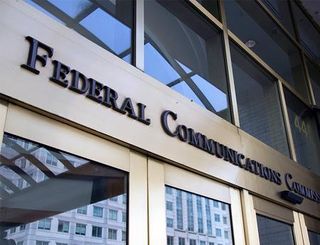FCC Seeks Comment on DSTAC Report

The FCC Media Bureau announced Monday that it is seeking public comments on the final report that the Commission-appointed Downloadable Security Technical Advisory Committee (DSTAC) submitted last Friday (August 28).
The FCC, which also posted the six-page report here, said comments are due Oct. 8, 2015, with reply comments due Nov. 9, 2015. Docket 15-64 has been setup for the process. The FCC has not announced plans to follow with a larger Notice of Inquiry or a full Notice of Proposed Rulemaking on the matter.
“By this Public Notice, the Media Bureau seeks comment on the DSTAC’s report, including the four Working Group reports attached to the final report, and how it should inform the Commission’s obligations under Section 629 of the Communications Act,” the FCC Media Bureau noted.
The formation of the DSTAC in January followed the passing of the STELAR Act, legislation that will sunset the current set-top security integration ban in December 2015 and called on the FCC to take a look at a successor approach to the CableCARD that could spur the retail market for video navigation devices for not just cable operators, but other MVPDs.
The DSTAC report presents two security proposals -- one that relies on HTML-5 security APIs and associated encrypted media extensions for distribution in the home and via the cloud, and a “virtual headend” approach whereby the network security and condition access is handled in the cloud with interfaces between the operator and the device using protection such as DTCP-IP.
The scope of DSTAC’s work also was not unified, as it spanned multiple non-security and control plane components. A proposed app-based approach would retain the MVPD’s user interface as services are made available on IP-connected retail devices such as gaming consoles, tablets and PCs. Another approach factors in competitive navigation/UIs that empower CE companies, such as TiVo, to create and implement their own guides.
The Consumer Video Choice Coalition -- a group whose membership includes CCIA, COMPTEL, Public Knowledge; Ceton, Google, Hauppauge, SiliconDust, TiVo and Vizio – applauded the DSTAC’s work and the FCC’s decision to put out its call for public comment. The CVCC also wants the FCC to follow with policies that would lead to a vibrant market for set-tops and other video devices.
Multichannel Newsletter
The smarter way to stay on top of the multichannel video marketplace. Sign up below.
"The DSTAC process was productive, in that it showed that the disagreement between cable companies and others about the set-top box market is not about what technologies are possible, but what outcome the FCC should work for,” the group said, in a statement. “ The Consumer Video Choice Coalition believes that the FCC should adopt policies that are most likely to lead to a competitive set-top box marketplace, where consumers can choose from a variety of devices at different price points and with different feature sets, and no longer have to rent outdated devices from their TV provider.”
The National Cable & Telecommunications Association also was generally pleased with the DSTAC report, but was not wild about the potential return of an AllVid proposal that originally envisioned a government-specified gateway device uniting video from various sources.
"Regrettably, the report veers off course by including a controversial proposal to place a burdensome technology mandate on MVPDs known as AllVid," NCTA said in a statement released late last week. "This approach could jeopardize consumer protections including privacy, emergency alerts, parental controls, and inhibit innovation by allowing the government to dictate the way video content is delivered to consumers."
